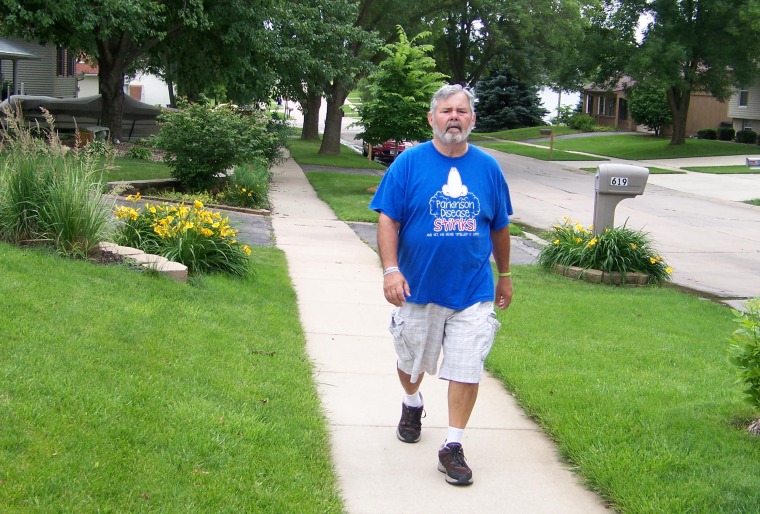Walking is an almost magic elixir, doctors like to say. It can reverse diabetes, lower blood pressure, and help people keep the fat off. Now a study shows it can also help people with Parkinson’s disease.
Parkinson’s patients who walked just three times a week felt less tired, less depressed and they found their Parkinson’s symptoms improved, also.
“The results of our study suggest that walking may provide a safe and easily accessible way of improving the symptoms of Parkinson’s disease and improve quality of life,” Dr. Ergun Uc of the University of Iowa and the Veterans Affairs Medical Center of Iowa City, who led the study.
The findings would only apply to Parkinson’s patients who can still walk easily. Parkinson’s is caused by the loss of brain cells that produce a message carrying-chemical, or neurotransmitter, that is important for movement. Symptoms can start with a barely noticeable trembling but worsen to difficulty walking and talking, depression and other disability. There’s no cure and the drugs used to treat the condition usually stop helping over time.
Some people have trouble walking. But for those who don’t, the study found, walking can help their symptoms.
And other research suggests that regular exercise can help slow down the progression of Parkinson’s. Various programs show that dancing,cycling, Pilates and even boxing can help.
But walking has a big advantage – people can do it anywhere, without special equipment, and on their own schedules.
For the study, Uc’s team recruited willing Parkinson’s patients and ran a battery of tests to make sure they were walking at a moderate pace, fast enough to raise their heart rates a bit, but not too much. The volunteers walked for 45 minutes at an average of 2.9 miles an hour and raised their heart rates to 47 percent of capacity. They said 48 people completed the six-month study.
“We observed improvements in aerobic fitness, motor function, fatigue, mood, and aspects of executive functions and quality of life,” Uc’s team wrote in the journal Neurology.
“Aerobic walking may represent an accessible, low-risk supplemental treatment for fatigue and depression, and improve quality of life in Parkinson’s disease as in aging, primary depression, cancer, and other chronic medical conditions.”
The federal government recommends that adults get 150 minutes per week of moderate exercise —that’s just half an hour a day, five days a week, but hardly any Americans meet that goal.
It’s just the latest in a series of studies that show exercise, especially walking, can help prevent Alzheimer’s disease, stroke, heart disease and depression. It can even help you live longer.
